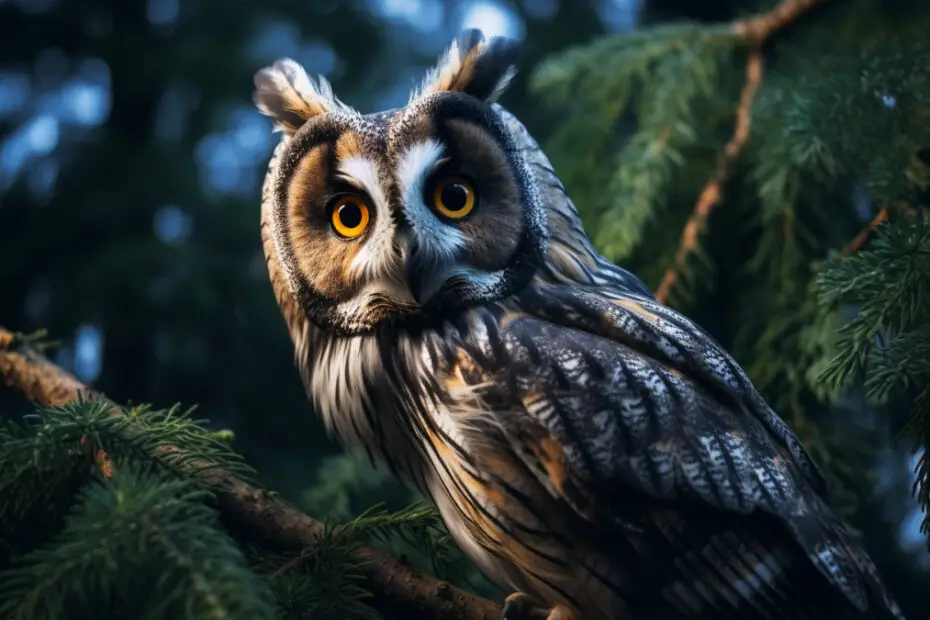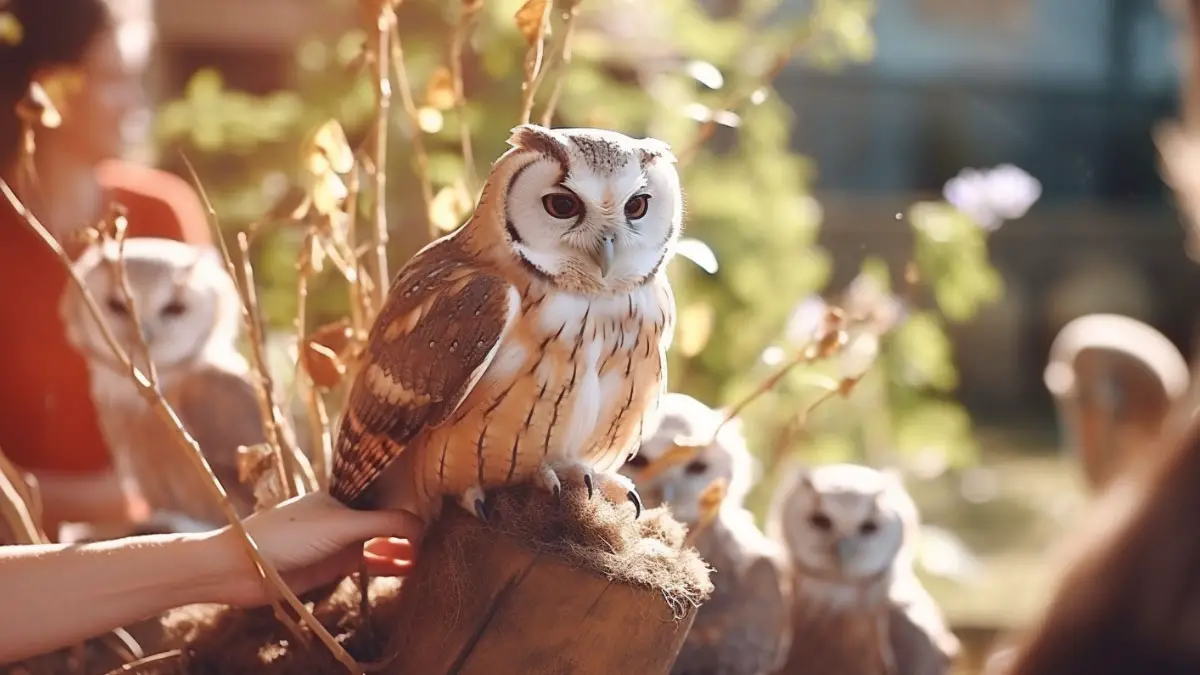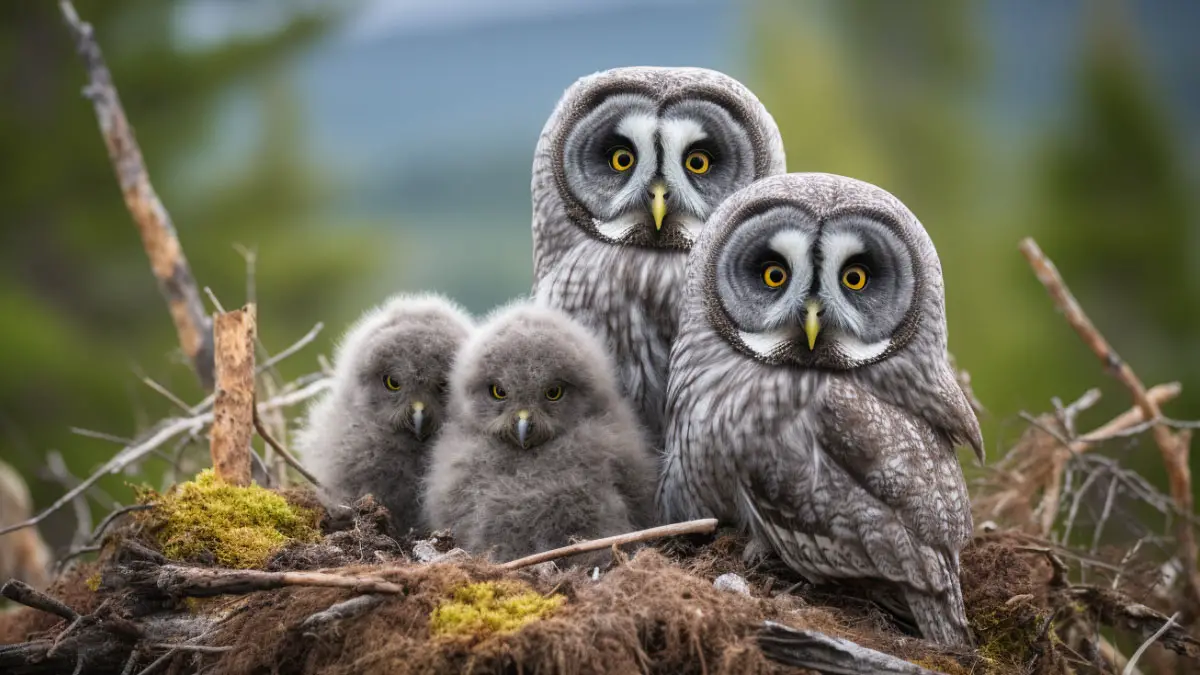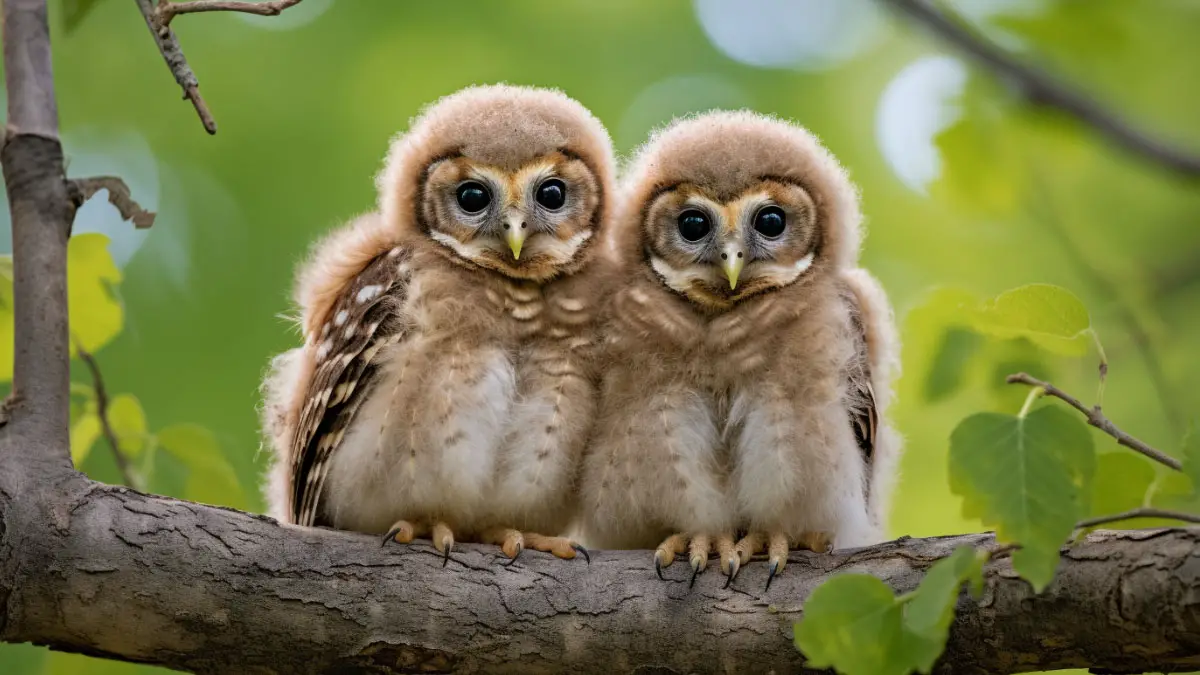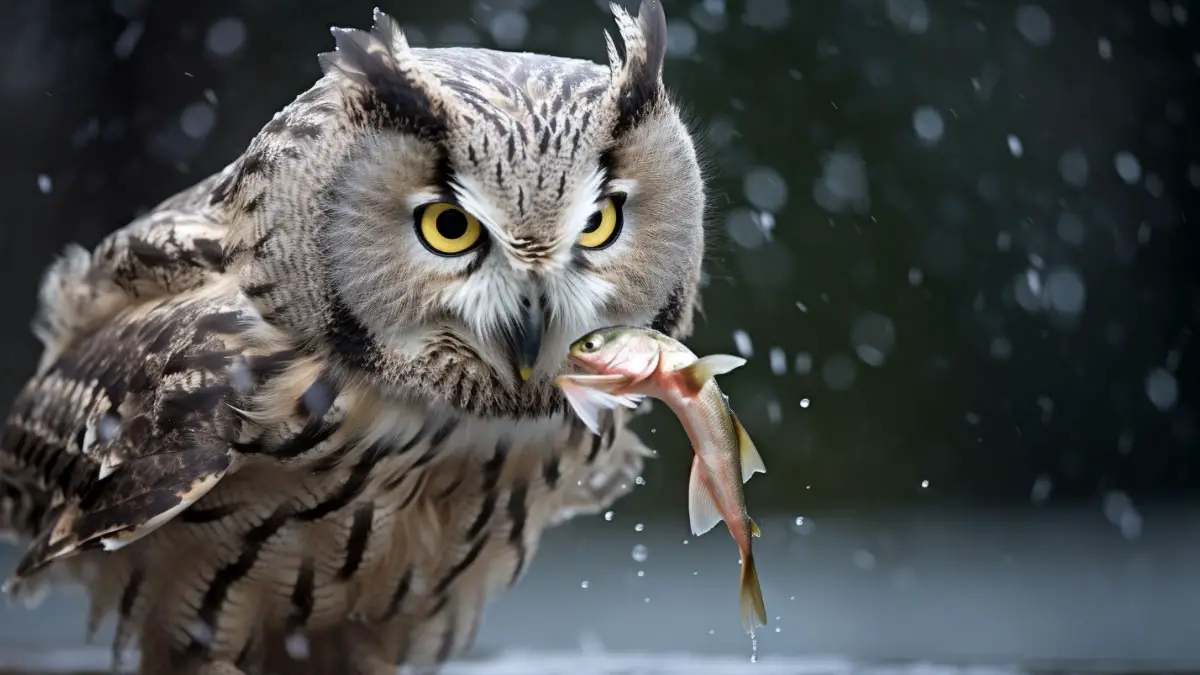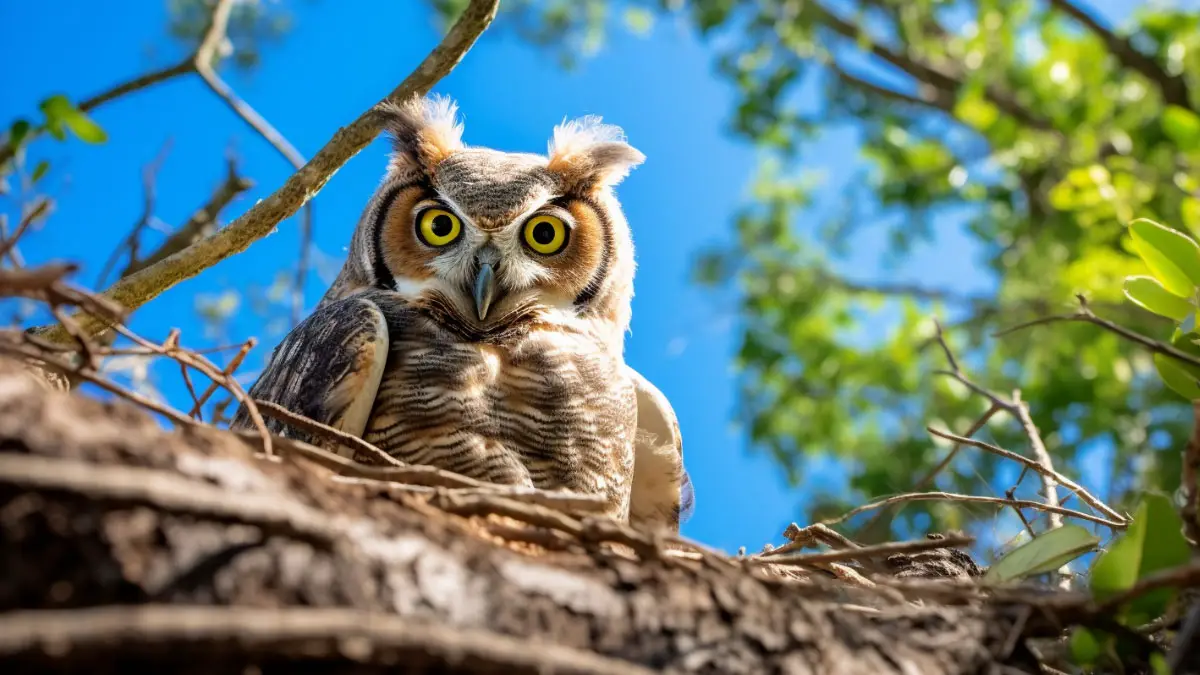When scientists studied the pellets from different owl species, they noticed a minimum of 0.2% bat remains in these pallets. This discovery revealed that owls most likely hunt and consume bats in the wilderness.
So, you might wonder, do owls eat bats? Scientists found that Long-eared owls, Barn owls, and Tawny owls hunt bats as a part of their natural foraging behavior. On the other hand, Pygmy owls, Tengmalm’s owls, Eurasian scoop owls, and Ural owls occasionally feed on bats. This happens when their usual food source is not available in their natural habitat.
In this article, we will discuss the types of owls that feed on bats. Plus, we will talk about how owls hunt bats in their natural habitat. So, let’s get started!
Do Owls Eat Bats: A Detailed Overview
In recent years, researchers have conducted numerous studies regarding owl hunting behavior and their preferred prey. These studies concluded that owls indeed hunt bats just a few hours after sunset.
But, let me make one thing clear. In the wild, owls prey on bats only when they cannot find mice, rabbits, voles, lizards, and frogs. This is because it is easier to catch animals that cannot fly.
In 2002, a group of researchers gathered Barn owl pellet samples. These researchers discovered that about 26.6% of these samples contained traces of Myotis myotis bats.
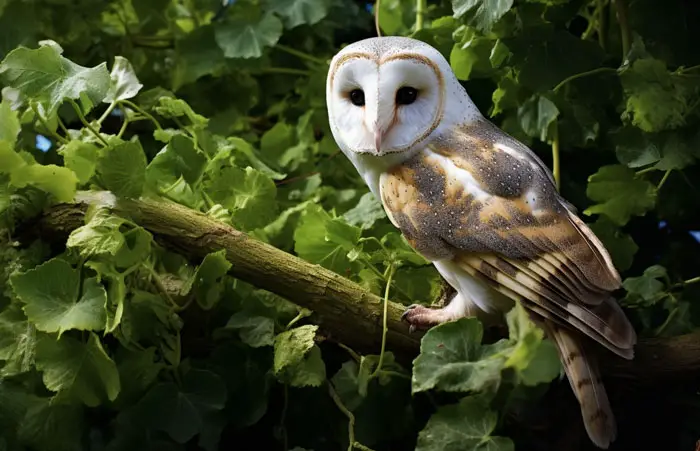
Myotis myotis bats typically gather in groups and hang from tree branches or roofs during hibernation. The researchers concluded that Tyto alba owls are able to hunt a large number of bats while the bats fly to their hibernation sites.
Research has shown that the highest number of bats were caught by these owls in Crete. They found about 3.59% of bats in the diet of Monkey-faced owls in that region. You can find this information in the table we have provided below.
| Name of the Country/ Island | Number of bats as prey | Percentage (%)of bat in the owl’s food |
|---|---|---|
| Crete | 155 | 3.59 |
| Sardinia | 43 | 1.64 |
| Austria | 153 | 1.02 |
| Slovenia | 277 | 0.99 |
| Slovakia | 192 | 0.82 |
| Malta | 3 | 0.71 |
Another research study found that S. aluco owls flew over bat roosts and surveyed the entire area. They attacked bats that came near them throughout the year. Look at the diagram we have added below. Here, you can clearly see that S. aluco owls primarily attacked bats about two hours after sunset.
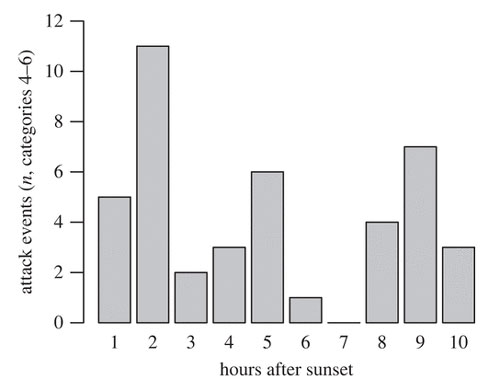
Figure: The bar chart shows the hours after sunset when owls most likely attack bats.
Polish researchers also noticed that S. aluco owls hunted bats from April to November, especially during the night. This is because bats were most active during this period. So, it became easier for the owls to hunt them as they flew to and from their resting spots.
Researchers also observed that these owls mainly attacked the bats when more bats were present in the roosts during the lactation season. From August to January, the availability of bats decreases as more bats travel to their wintering sites. So, during these months, S. aluco owls hunted fewer bats.

Check out the table we have added below. Here, we have listed the various species of bats that were found in the diet of S. aluco owls.
| Name of the bat | Percentage found in S. aluco owl’s diet |
|---|---|
| Natterer’s bat | 14.0% |
| Brown long-eared bat | 6.5% |
| Greater mouse-eared bat | 47.3% |
| Daubenton’s bat | 28.0% |
| Brandt’s bat | 3.2% |
As per a study, the pellets of the following owls had a significant amount of bat bones and hairs:
- Short-eared owl
- Eurasian eagle-owl
- Ural owl
- Marsh owls
Overall, owls tend to attack and prey on medium-sized bats that live in large groups or colonies. During the migration period, owls often attack and feed on the younger bats as they are easier to catch.
Owls Hunting Techniques: How Owls Hunt Bats?
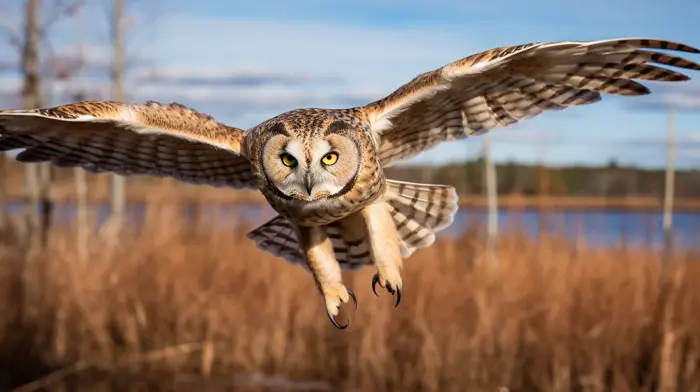
According to owl experts, these birds use a mix of acoustic and visual cues to hunt bats. Most owl species hunt bats while the bats are flying from one place to another. There are two reasons behind this:
- Most owls cannot enter the narrow spaces where bats usually reside in the dark.
- Owls can fly silently and at a faster pace compared to bats.
According to a journal, owls have developed silent flight as a strategy to increase their hunting skills. Owls fly silently to avoid creating wing noises that might prevent them from hearing the sounds made by their prey.
Moreover, this technique enables owls to approach their prey without getting detected. As a result, the prey cannot escape quickly to avoid being captured by the owl.
Now, let’s talk about how owls use their excellent hearing abilities to hunt bats and other animals. Often, owls cannot see their prey clearly due to the following elements:
- Heavy snow
- Thick vegetation
- Tall infrastructures
- Complete darkness
In such conditions, many owls depend on their hearing to hunt. Thus, these environmental challenges caused owls to develop directional and highly sensitive hearing abilities.
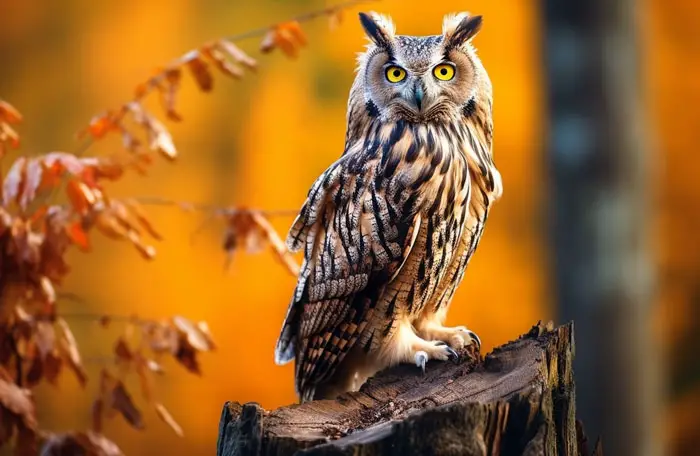
Researchers also found that the chances of an owl effectively spotting and striking bats decrease when environmental noise levels rise. Additionally, broader spectral bandwidth also negatively impacts the owl’s ability to hunt bats.
Generally, owls track the bats when they fly around their nesting sites. After that, they perch close to the bat roost. Owls utilize their spatial memory to locate the bat and avoid colliding with trees.
Then, the owls try to attack the bats as they fly by their perching site. In some cases, owls even go near the entrance of the bat’s roost and insert their talons inside to catch the young bats.
For more information on how owls hunt bats, you can watch this YouTube video.
How Do Bats React When Owls Attack Them?
According to researchers, different species of bats can comprehend and respond to auditory, visual, and chemosensory signals. This ability helps them detect the presence of a dangerous predator like a Barn owl.
Owls tend to attack bats more often when the bats are traveling, migrating, or foraging in open areas. Researchers observed that bats generally prefer not to travel long distances from their roosts. Instead, they are more likely to search for food near the edges of the forest.
Another study found that when bats travel in groups, they don’t seem to avoid risky situations. For instance, bats keep searching for food during the full moon phase.
Researchers discovered that bats use echolocation to locate their predators when their surroundings are covered in darkness. This ability also enables them to detect objects as small as 0.06–0.2 mm in diameter. They can do this at a distance of 1 to 2 meters.
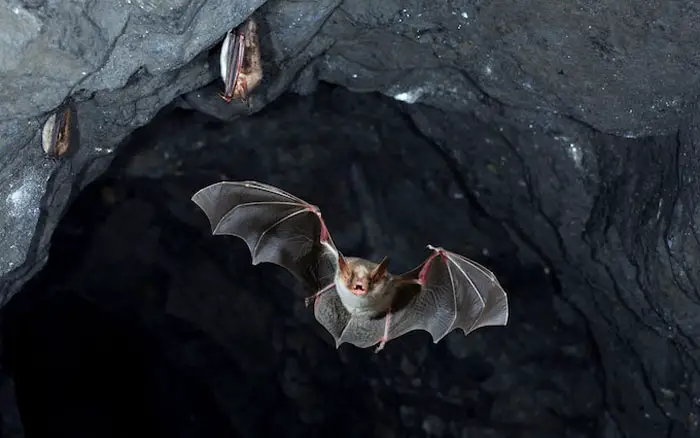
Once a bat detects a predator around it, the bat’s most common response is to get away from the predator rapidly. Bats display the following behaviors to avoid predators in the wild:
- Stay active at night.
- Bats come out from their roosts in groups.
- Bats live in large colonies.
- Adult bats protect the young bats in their resting sites.
FAQs
Check out the frequently asked questions we have added below. You can gain more information on whether owls hunt and feed on bats by reading these FAQs.
Some owls, such as the Spectacled Owl, Barn Owl, and the Tawny Owl eat bats in their natural environment. However, most owls hunt animals like mice, frogs, rabbits, snakes, and lizards. This is because it is easier for them to catch prey that lives on the ground than birds that can fly.
Owls usually eat the entire bat, including the bat’s wings, fur, and internal organs. They also eat the bones and teeth of their prey. But owls do not have the ability to digest these parts. So, they eject them from their bodies through defecating.
Generally, adult owls tend to be very fast flyers and extremely skilled hunters. Thus, they can avoid many predators. However, younger owls may get attacked by eagles, hawks, and foxes in the wild.
Final Words
Overall, owls hunt and feed on several species of bats, like the Plecotus auritus bat, Myotis myotis bat, and the Myotis daubentonii bat. Owls hunt bats when they are present in large quantities around the owl’s territory.
However, you will most likely notice owls feeding on fish, frogs, snakes, insects, and mice in their natural habitat. They tend to hunt bats on nights when these animals are not available.
Most of the time, owls sneak up on bats and attack them with their sharp talons. After catching a bat, the owl perches on a nearby tree, tears the bat apart, and eats it entirely.
